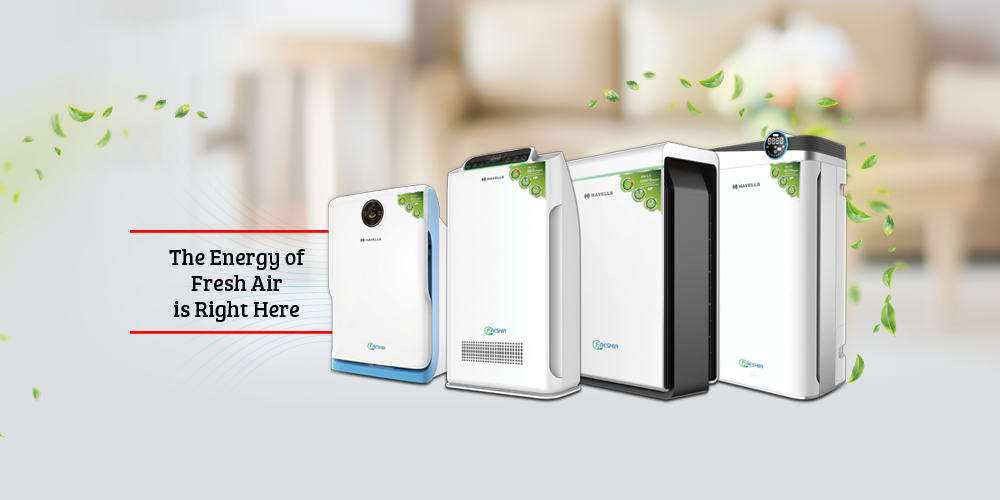How to buy an air purifier?
Once upon a time, the home was supposed to be a safety den that guarded us against not only unpleasant situations but also secured and refreshed us from the outside impurities and contamination. However, with the pollution level in the country rising to alarming levels, the latter is no longer valid. In fact, the indoor air has become 2-5 times more polluted than the outdoors mainly because it has particles from both the external and internal pollutants. For instance, apart from vehicular pollution, fuel burning, windblown dust, the inside air is also infected with cooking smoke, household cleaning chemicals, dry-cleaned clothes which contain toxic, fragrances from perfumes and deodorizers.
Thus, looking at today’s scenario, the air purifier which was earlier considered a luxury, has now come in the league of necessities that are as essential as food, water, and air. But before you make the purchase decision, below are a few tips that you should know-
- Room size and space
Determining the room dimension for which you need to buy the air purifier is the foremost requirement. For this, match the size to the coverage area that is usually mentioned in square feet (sq. ft) of each device. A smaller one will not clean the air entirely, though, a slightly bigger will purify it.
So, ensure that you buy the air purifier that has a rating that either equals or is greater than the intended room size. As a suggestion, for a single bedroom or study, most entry-level ones will work. Alternatively, for a larger room size or a connected room, either a large purifier or two small ones will be an apt purchase. These days almost all companies cater to the varied needs of people and thus have an air purifier size at different price points.
- CADR
CADR also known as Clean Air Delivery Rate is the international standard for calculating the effectiveness of an air purifier. In simpler terms, the higher the number of CADR of an air purifier, the faster it will clean the air. Usually, anything above 300 is considered good and anything lower than 100 is poor. Hence, when purchasing be mindful of the CADR and if you see a small-sized purifier claiming a rate comparable to those which are double its size, do not buy it.
- Filtration system
Filtration is the heart of an air purifier after all; this is the object that cleans the air. The most commonly available filter type is HEPA or High-Efficiency Particulate Air that captures airborne particles, seen and unseen, up to 99% and those as small as up to 0.3 microns. This purification maintains the overall indoor air quality.
Some purifiers also have 9-Stages of Filtration process that includes Pre-Filter, Cold-Catalyst, Activated Carbon, Antibacterial, HEPA, UV and Anion + Humidifier, Anti Bacterial Balls thereby, ensuring the air is completely clean. Though, the entry-level purifiers come with systems of anywhere between 3-5 filters.
- Placement
Placement is another interesting aspect that should be considered during the purchase. The air purifier should not touch the wall or any piece of furniture and should have some space, 1 to 2 feet, on all sides to operate proficiently. This is mainly because the air intakes are either on the sides or at the back of most purifiers, though these days some also offer 360-degree intake. This installation will help in cleaning the room from all angles and filter it efficiently. Also, don’t keep it near other electronic gadgets as it runs on a particular wavelength, and they may have a frequency clash with each other. So, make sure, you keep them apart.
- Ignore superfluous features
Besides cleaning the air, some air-cleaning devices claim to remove the odor and also use chemical or electronic treatments to purify the air. Though these features are useful but at any time, they shouldn’t be the deciding factor of the purchase. In fact, if you see an air purifier claiming of chemically treating air, do not buy it at all because they add a layer of ozone, which though is good for the earth from a higher altitude but when mixed with breathable air is harmful. The Consumer Reports recommends that people should avoid this feature because of ozone air is unsafe for breathing.
- Filter replacements
This is an essential aspect when purchasing an air purifier. So, before you dive in your pocket to make the payment, don’t forget to check the lifespan of the filter. Some require regular cleaning while others replacement at regular intervals. Filters usually range anywhere between Rs 1,500 and Rs 2,500 and have a span of around six months. As this will be a recurring cost, it is best to figure out the cost of replacement filters beforehand.
Last few things to check are the energy star ratings that can save you from bloated electricity costs and noise levels from the fan when running at the top speed, which should be around 35 decibels. Do not opt for models with above 55 decibels rating.
Now that you understand the benefits of air purifiers and are aware of a few essential tips of buying the right product don’t get confused with the plethora of them available in the market. But, if you still need a brand suggestion, then we will say opt for the technologically advanced air purifiers from Havells. These come in four variants that suit various room sizes. So, check them out now.

